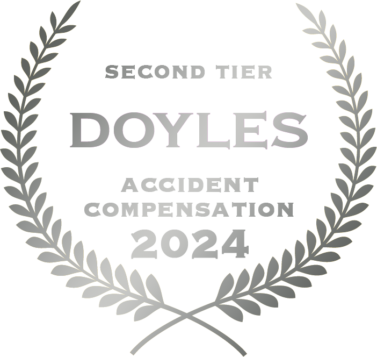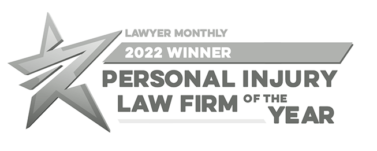
Whole Person Impairment Compensation Calculator and Guide.
If you’re injured at work in NSW, depending on your whole person impairment rating (also known as permanent impairment rating), you might be entitled to a lump sum benefit up to a maximum of $740,550*.
In this guide, we explain everything you need to know about whole person impairment payouts, and we’ve included a simple whole person impairment compensation calculator you can use to estimate your lump sum payout range.
Jump straight to the calculator.
*As of November 2024.

What’s a whole person impairment payout? And why is it so important to make a permanent impairment claim?
A whole person impairment payout is a lump sum payment to compensate you for the overall effect your work injury has had on your life. This lump sum payout is in addition to any weekly payments, medical and related expenses that you may have received.
You must have 11% or more whole person impairment for a physical injury or 15% or more for a primary psychological injury to be entitled to receive a whole person impairment payout in NSW.
For emergency services workers, the threshold reduces to 1% for physical injuries but is still 15% for psychological injuries.
Once you’ve received a whole person impairment payout, it doesn’t put an end to any weekly benefits you’re entitled to – these payments will continue as long as you qualify for them.
Tip: Why is it so important to claim?
It’s super-important to pursue a permanent impairment claim if you qualify. The length of time the insurer is required to pay for your treatment costs is dependent on your level of whole person impairment (WPI). If your level of WPI hasn’t been assessed, the insurer will pay for treatment for at least two years from the date of your injury or two years from the last date you received weekly benefits (whichever is later).
However, once your level of WPI is assessed, this entitlement will be extended according to the table below:
| Your level of whole person impairment (%) | Entitlement period |
|---|---|
| 0-10% whole person impairment | Two years from the date of your injury or two years from the last date you received weekly benefits (whichever is the latter). |
| 11-20% whole person impairment | Five years from the date of your injury or five years from the last date you received weekly benefits (whichever is the later). |
| 21% whole person impairment and over | Lifetime coverage. |
0-20% – wages benefits capped at 5 years
21% plus – wages benefits entitlement continues to age 68
What’s the whole person impairment scale?
The whole person impairment (WPI) scale is a rating system used to measure the amount of permanent damage caused by your injuries. It’s based on the loss, or loss of use of any part of your body, or any part of your bodily system or function. Injuries that lead to whole person impairment can be physical or psychological.
What are some examples of impairment ratings?
Here are some examples of common injuries and surgical procedures and the associated whole person impairment NSW ratings:
| Injury/ Procedure | Approximate Impairment Rating |
|---|---|
| A simple disc bulge in the lumbar spine | 5-8%. |
| A discectomy surgery of the lumbar spine | 10-16% |
| Hearing loss of at least 21% binaural hearing loss | 11% |
| A fusion surgery of the wrist | 18% |
| A fusion of the lumbar spine | 21% |
| A joint replacement to the shoulder, hip or knee | 21% |
| Amputation of the thumb | 22% |
| Loss of eyesight in one eye | 32% |
Whole person impairment compensation calculator NSW – updated June 2024.
Once you know your impairment rating, you can calculate your payout range using the following whole person impairment table NSW (June 2024).
Please note that your compensation amount will depend on the year your injury occurred as well as your level of whole person impairment. Also, different amounts apply for dust diseases, emergency service workers and coal miners, but are not included in this whole person impairment table for NSW.
Whole person impairment table NSW (updated November 2024):
| Degree of permanent impairment | Compensation range |
| 0 – 10% | $0 |
| 11% – 20% | $22,480 – $62,770 |
| 21% – 30% | $51,880 – $100,470 |
| 31% – 40% | $83,040 – $162,450 |
| 41% – 50% | $131,440 – $224,550 |
| 51% – 60% | $242,010 – $396,570 |
| 61% – 70% | $376,030 – $568,550 |
| 71% – 74% | $510,040 – $654,540 |
| 75% – 100% | $577,050 – $740,550 |
benefits guide – updated November 2024
Call 13 15 15 or chat to us now for free advice
Chat nowFind out how much you can claim.
Get startedHow do you calculate whole person impairment in NSW?
Whole person impairment in NSW is calculated by a doctor who assesses your injuries according to the NSW Compensation Guidelines for Evaluation of Permanent Impairment.
The doctor can’t combine both physical and psychological injuries to determine your level of whole person impairment – your compensation is based on your primary injury only (physical or psychological). The doctor also considers your medical history and all available relevant medical information.
The doctor must be accredited as a SIRA-approved assessor, and your workers compensation lawyer will arrange your assessment directly with the doctor. If your WPI is expected to be 21% or more, the insurer is likely to pick their own doctor to do your assessment, as this level of impairment means you’re entitled to compensation for lost wages for five years.
What sort of injuries cause permanent impairment?
The following permanent impairment table of injuries and procedures gives some examples:
Physical injuries:
| Injury/ Procedure | Description |
| Disc bulges | Also referred to as sciatica |
| Surgery | Such as joint replacement and spinal surgery |
| Hearing loss | Where the hearing loss is work-related |
| Ankle or wrist fusion | Fusion results in loss of joint mobility |
| Multiple injuries | Injuries that affect multiple body parts |
| Knee, elbow and shoulder injuries | Where range of movement is restricted |
| Eye injuries | Where eyesight is impacted |
| Nerve damage | Where the cause is work-related |
Psychological injuries:
The whole person impairment psychological injury assessment is based on an examination done by a psychiatrist who is trained in this assessment method.
A psychiatric disorder is considered permanent if the psychiatrist determines it’s likely to continue indefinitely. The psychiatrist will consider:
- The duration of your impairment
- The likelihood of improvement in your condition
- Whether you have undertaken reasonable rehabilitative treatment
- Any other relevant matters
For psychological injuries or conditions to reach the permanent impairment rating payout threshold, the condition needs to affect your concentration and your ability to work and care for yourself. Post-Traumatic Stress Disorder (PTSD) is a condition that often reaches this threshold.
What happens at a whole person impairment assessment?
The doctor who does your assessment will look at the following criteria:
- Has your condition reached maximum medical improvement (MMI)? Or in other words, has your injury stabilised, and is your condition unlikely to improve?
- Do you have an impairment because of your injury?
- If so, is this impairment permanent?
- To what degree are you permanently impaired?
- Is your permanent impairment partly due to a previous injury or condition?
After completing your assessment and answering these questions, the doctor will determine your whole person impairment percentage using the tables, graphs and methodology given in the guidelines.
Call 13 15 15 or chat to us now for free advice
Chat nowFind out how much you can claim.
Get startedHow can you get help claiming a whole person impairment payout?
The whole person impairment compensation calculator and guide we’ve presented here provides useful reference information, however it’s important to understand that your situation is unique, and your injuries may have led to other health issues and complications. At Law Partners, we have some of Australia’s best no win no fee lawyers who will take time to get to know you personally and get a thorough understanding of how your life has been impacted by your injuries. That’s how we’ll make sure you receive your maximum compensation entitlements, including any lump sums you’re entitled to.

Chantille Khoury
Principal
Chantille is a multi-award-winning, preeminent workers compensation specialist with over 20 years’ experience. Having ranked top 6 nationwide in the highest category of the Doyle’s Guide, Chantille is now providing feedback on policy changes for the Personal Injury Commission and government bodies.
Related articles.
Do I have a case?
Our senior lawyers will assess your case for free.




















